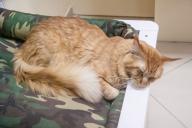What exactly should not be flushed down the toilet to avoid damaging it and causing blockages?
Toilet paper
Not all types of toilet paper dissolve well in water. Some have a dense structure, fragrances or moisture-resistant layers that can create lumps and clog pipes.
Plumbers advise choosing toilet paper labeled “water-soluble” or “biodegradable.”

Wet wipes
Wet wipes are usually made of synthetic fibers that are not water soluble and do not biodegrade.
They can form giant clumps that block the drain. Plumbers strongly recommend not flushing wet wipes down the toilet.
Feminine pads and tampons
Feminine pads and tampons are specially designed to absorb and hold liquid, so they expand significantly when they are immersed in water.
They can easily get stuck in pipes or traps. Plumbers insist that pads and tampons should never end up in the toilet.
Hair and nails
Hair and nails are made of keratin, which is very strong and resistant to water and bacteria.
They can accumulate in pipes and form tangles that prevent water from flowing freely. Plumbers suggest collecting hair and nails in a separate container and throwing them away with other waste.
Food and fat
Food and grease can remain on the walls of pipes and create a deposit that reduces the diameter of the drain.
In addition, they can attract pests that can enter the house through the toilet. Plumbers advise not to flush food and grease down the toilet, but to use special containers for their disposal.
Medicines and chemicals
Medicines and chemicals may contain toxic or corrosive substances that can damage your toilet, pipes, or septic tank. They can also leach into wastewater and pollute water supplies.
Plumbers recommend not flushing medicines and chemicals down the toilet, but taking them to special collection or disposal points.








